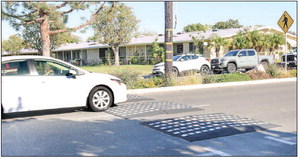Scam Alert
Leisure World resident Phil Arnold emailed to warn people about a recent spate of “malicious phishing emails” he received. After opening the first one, which was supposedly from Chase Bank, he has learned “ not to click” on anything in an email that is from e.something.com. The e. is a tip-off that it is phishing. So far he has received emails from @e.chase.com, @e.experian.com
and @e.bluehost.com.
According to the Federal Trade Commission, phishing emails and text messages may look like they’re from a trusted company, such as a bank, a credit card company, a social networking site, an online payment website or app, or an online store.
Scammers use fake these email or text messages to trick people into giving them personal information. But there are several things you can do to protect yourself.
How to Protect Yourself From Phishing Attacks
1. Protect your computer by using security software. Set the software to update automatically so it can deal with any new security threats.
2. Protect your mobile phone by setting software to update automatically. These updates could give you critical protection against security threats.
3. Protect your accounts by using multi-factor authentication. Some accounts offer extra security by requiring two or more credentials to log in to your account. This is called multi-factor authentication. The additional credentials you need to log in to your account fall into two categories: » Something you have — like a passcode you get via text message or an authentication app.
» Something you are — like a scan of your fingerprint, your retina, or your face.
Multi-factor authentication makes it harder for scammers to log in to your accounts if they do get your username and password.
4. Protect your data by backing it up. Back up your data and make sure those backups aren’t connected to your home network. You can copy your computer files to an external hard drive or cloud storage.
Back up the data on your phone, too.


